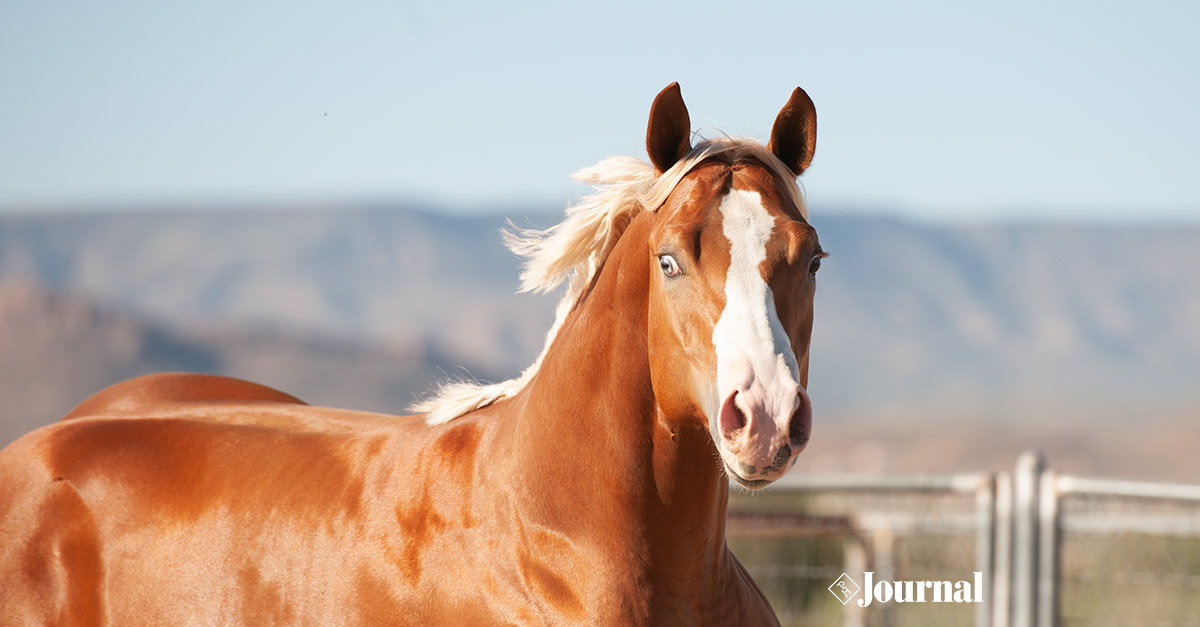Due to COVID-19 and the resulting economic recession, the Board of Directors have implemented a modification to RG-070.E.—the pathway for some solid Paints to earn Regular Registry status through presence of Paint traits and Paint genetics—as part of their 2020 APHA Stimulus Plan, which goes into effect May 4, 2020. This modification provides a means for horses with one APHA-registered parent to participate in this rule and is designed to preserve the overall health of the APHA horse market.
Now, to qualify for the Regular Registry, a horse must meet the following requirements based on their pedigree:
- Two Paint Parents:
- Horse can meet Regular Registry requirements through natural Paint markings in the qualifying area; OR
- Horse must have at least one Paint trait identified in RG-070.H.1–10 and at least one Paint pattern gene confirmed through APHA-approved genetic testing
- One APHA Parent*:
- Horse can meet Regular Registry requirements through natural Paint markings in the qualifying area; OR
- Horse must have at least two Paint traits identified in RG-070.H.1–10 and at least one Paint pattern gene confirmed through APHA-approved genetic testing
- EXCEPTION: Tobiano Gene—If a horse has one APHA parent and the horse carries the Tobiano gene (confirmed through APHA-approved genetic testing), only one Paint trait as identified in RG-070.H.1–10 is required.
*Horses still must meet APHA parentage requirements in RG-020, which requires the non-APHA parent to be registered with AQHA or the Jockey Club
- No APHA Parent:
- The registered AQHA or Jockey Club horse must meet Regular Registry requirements through natural Paint markings in the qualifying area.
If a horse with one or two APHA-registered parents does not meet those requirements, the horse will be registered in the Solid Paint-Bred Registry.
The traits used for consideration are listed in RG-070.H.1–10; while these were not designed for use specifically with the genetics-based rule, they have been adapted for that purpose. They are defined as:
- White leg markings—This was modified to remove the stipulation “above the knees or hocks”
- Glass, blue or watch eye(s)—Partial or full blue eyes are acceptable
- Apron or bald face—Defined in the rulebook as touching a line from the inside corner of the eye to the inside corner of the nostril
- White on the jaw or lower lip
- Blue zone around a “natural paint marking”
- Two color mane or tail, one color being natural white
- Dark spots or freckles in white hair on the face—This is a spot of colored hair and pigmented skin composed within the horse’s white face markings
- White areas in the non-visible zone, excluding the head, completely surrounded by a contrasting color—The non-visible zone is generally anything you cannot see from a standing position, such as white markings on the midline/abdomen, inner thigh, floor of the chest and buttocks
- A contrasting area of another color in the non-visible zone, including the head, on a predominantly white horse
- Ink spots/paw prints and/or coronet spots—These are dark spots typically found inside white markings on the horse’s legs or body
The Process
For horses already registered with APHA, a status change can applied for beginning May 4, 2020. This rule is retroactive and applies to any horse registered with APHA. The following must be provided to APHA:
- The horse’s original APHA registration certificate, with “registry change” marked on the back
- Photos of the applicable trait(s) on the horse in question
- DNA Color/Pattern order form, or reference to test results that have been competed at an APHA-approved lab (copy of test results required if testing is not already on file at APHA)
- Testing must come from an APHA-approved lab (UC-Davis or Etalon Diagnostics).
- DNA recording fee applies if testing was completed privately at one of those approved labs
- Status change fee
For foals applying for registration, the Color/Pattern test should be ordered as part of the registration process, and notation can be made on the application that you wish to use the new RG-070.E rules for consideration of Regular Registry status.
Mail to: APHA MemberCare, 122 E. Exchange Ave, Suite 420, Fort Worth, TX 76164.
Questions about this rule can be directed to jhein@apha.com.





